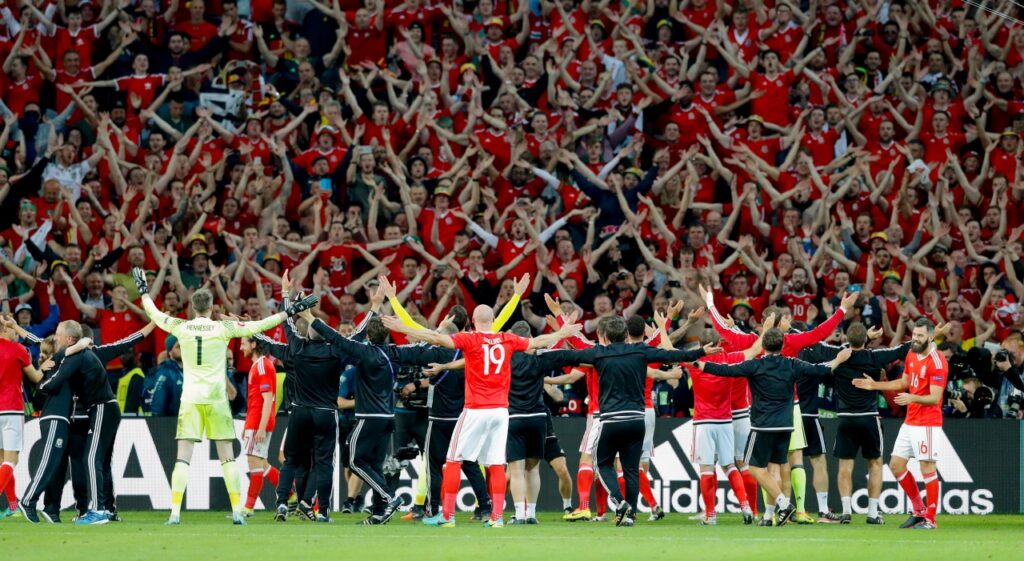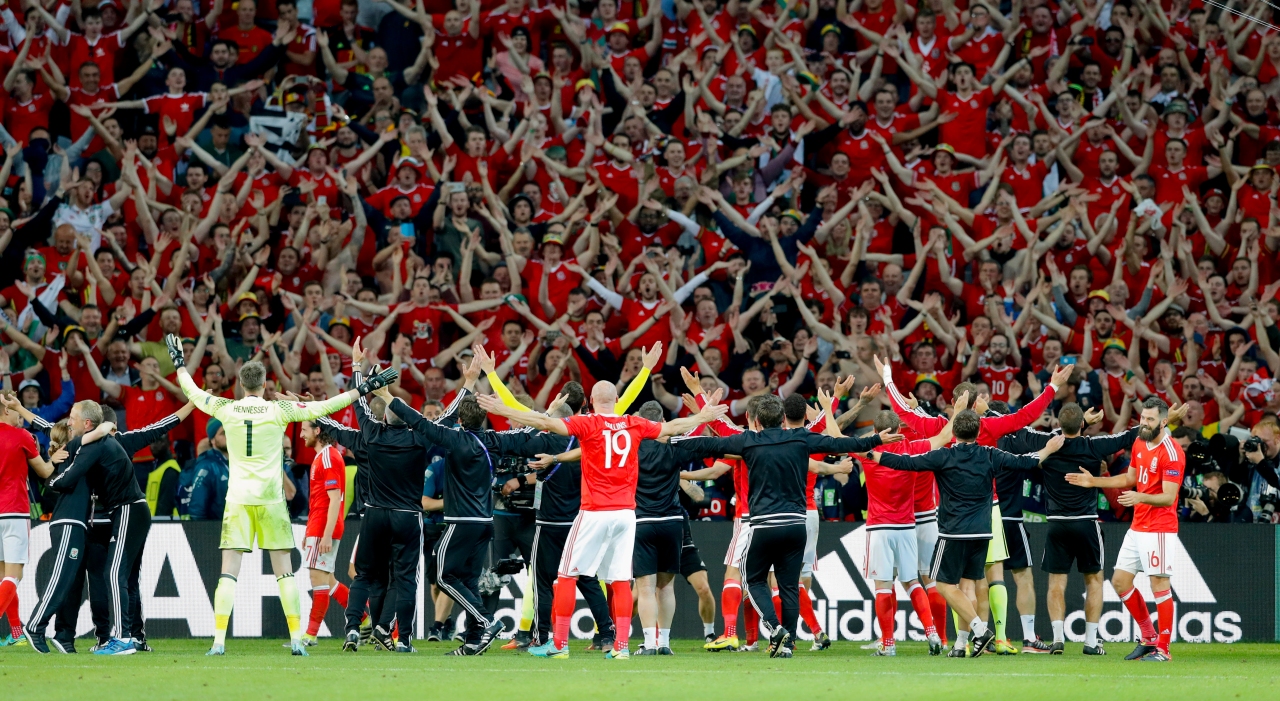
Source: Michel Spingler, The Associated Press
Today, football is a major global sport. Its inception is clouded with various propositions, ranging from its invention by the Chinese during the Han Dynasty, locally known as ‘Tsu-Chu’ (Dunning 1999) or by the Romans as ‘Harpastum’ (Koller and Brandle 2015: 9) as a part of their military training. The modern form of football bears little resemblance to the wild folk-football, having undergone many changes. The mid-18th century saw football enter into the world of the middle-class Victorian schools, thus moving onto the sphere of ‘the people’. It encapsulated and promoted the virtues of discipline and teamwork.
Spectating became a significant aspect of the social sphere as well. People would go to grounds and later on big stadiums. The ‘Twelfth Man’ or the spectators who engage themselves by picking a side provided a new dynamic to the game and gained significance in people’s life. Along with entertainment, a spirit of competition brews, and people start to identify themselves as supporters.
Audiences are usually considered as the endpoint or a by-product of any cultural process. The production elements are somewhat deemed less relevant than the process itself (Crawford 2004: 3). However, the supporters continuously produce and reproduce the culture by making the event a spectacle. They are integral for this culture to grow and sustain. A ‘leisure-time sport became a major aspect of people’s lives. The interdependence of social beings and sports as a cultural institution is significant. What seems to have happened is a kind of interdependence that has already started to resemble human beings’ association with the religious sphere of society.
The social reality of football as a sport creates a base for human interactions, which form spaces in the cognitive mind for imaginations associated with identity. This ‘collective imagination’ (Harrari 2011: 30) not only helps bring a large number of people together, work and cooperate, but they also lose their fictitious characteristics to the domain of an alternate reality. This reality is full of ideas and beliefs which complement the actual reality. It forms a diverse pattern of actions and behaviour, forming a culture among the people. Such a ‘fan culture’ can be found in sports such as football.
Akin to identification with a religious community and culture, a commune of fans has a system of beliefs imagined and reified into a reality. This is no fictitious entity but an integral part of their every day physical existence. The beliefs gather a pious nature similar to any religious sphere. Fans deem their particular cultural sphere and its constituent features as sacred. The ordinary, mundane life becomes profane and this sphere acts as solace for an individual. The piousness of the constituent features keeps the commune glued to each other. A shared set of beliefs and ideas which give meaning to the group and the dependence on that culture as a whole presents itself with a sacred repute.
Emile Durkheim (1912) states that these sacred ideas, beliefs and values are objectivated in what he called ‘totems’. They constitute the core of any religious culture and represent all that is in religion, the idea of something pious. According to W.H.R Rivers (1914), totems are social and psychological elements spurring a set of identity relations among the community members with something greater than them, accompanied by rituals (Levi-Strauss, 1962: 8).
Citing parallels with fan culture, we can see that a similar sense of identity is associated with a particular sporting team and a set of sacralized ideas, symbols, and actions reflected on the logo, the jersey colours, and sporting rituals. Cradled in an intense fervour for sports, specifically in football, it provides a platform for the followers and fans to interact and cooperate and keep them away from mundane everyday life. These fans subjectively acknowledge their objectivated emotions and beliefs that are central to their lives, similar to any religious commune. The symbolic representations remind them of the team and, in turn, help them realize their identity and cultural belongingness.
Like the ‘cross’ for a Christian or a shivling for a Hindu, the team’s colours, logo, and flags become a symbol of identity. Malinowski (1948: 27) said that totems are blessings by religion upon human beings to survive and sustain, thus emphasizing its importance on culture. This idea of community formation and cooperation has helped humans climb up the food chain. These primitive traits of admiration and awe for cultural symbols of a community have been hardwired in our DNA and passed on through the genome to contemporary times, just like many other human traits (Harrari, 2011: 45). This trait may reflect on a variety of cultural platforms, such as religion or fan culture.
For the culture to sustain, the members must also adhere to practices known as rituals. These attitudes and obligations of acting and behaving (Levi-Strauss, 1962) could be seen in and among football fans. They come together for pre-match rituals such as welcoming the team with a ‘pyro’ show, chanting about the players and the team, intimidating the opposition with choreographed moves such as the ‘Skol’[i] and so on. A moment of hysteria and delirium is created by the members of the fan culture (Jenson 1992: 9), which is identified by Levi-Strauss (1962) and Durkheim (1912) as integral to religion.
These practices help the fans realize their membership in the community and the sacred nature of the associated cultural identity. They routinize their association with the group. The practices that complement the beliefs unite members into one community driven by a collective consciousness (Durkheim: 1947). It is a product of shared beliefs, practices and rituals (Evans 1977: 32). For the religious sphere, these places are temples, mosques, churches, etc., and for a football fan, it is the stadium, the sacred bastion where people live and re-live their identity and culture.
Fan culture also reflects philanthropic values like traditional religions – like seva and daan in Hinduism (Weber, 2016), zakat and sadaqa in Islam (Feener and Wu, 2020), charity in Christian tenets[ii] or langar in Sikhism. As an example, we can see the community service being done for the poor and needy in Liverpool, England by the ‘Spirit of the Shankly’ supporters’ group of Liverpool Football Club[iii] or the donations for flood-affected areas in Assam, India by the Highlander Brigade[iv], the supporters’ club of North-East United Football Club, from the Indian Super League. This ethical incentive makes the association with such communities as sacred and virtuous as being within the periphery of the traditional religious communities.
Football fan culture and its communities have been an important medium to get away from the mundaneness and the troubles of everyday life. This essay has been an attempt to cite the parallels between the cultural sphere of religion and football fanaticism. It is yet to be seen how and why these surrogate cultural spheres have risen along with the existence of the millennium-old traditional ones.
References:
- Crawford, G. (2004). Consuming Sport: Fan, Sport and Culture. London and New York: Routledge, Taylor and Francis Group.
- Dunning, E. (1999). Sports Matters: Sociological studies of sport, violence and civilization. (2nd ed.) Taylor & Francis e-Library.
- Evans. A. (1977). An Examination of the concept “Social Solidarity”. Mid-American Review of Sociology, 2(1), pp. 29-46.
- Feener, R.M & Keping Wu, K. (2020) The Ethics of Religious giving in Asia: Introduction. Journal of Contemporary Religion, 35(1), pp. 1-12. DOI: 10.1080/13537903.2020.1695789
- Harrari Y.N. (2011). Sapiens: A Brief History of Humankind, pp. 22-46. London: Vintage Books.
- Koller, C. and Brandle, F. (2015). Goal: A Cultural and Social History of Modern Football. (David S Bachrach, Trans.). Washington DC: The Catholic University of America Press.
- Levi-Strauss, C. (1962). Totemism. (R, Needham, Trans.). London: Merlin Press.
- Malinowski, B. (1948). Magic, Science and Religion, pp. 1-71. Glencoe, Illinois: The Free Press.
- Weber, E. (2016). Charity of Religions with special reference to Hinduism, Islam and Christianity: An Interreligious Perspective. Journal of Religious Culture, p.213.
[i]https://www.si.com/soccer/2018/06/15/iceland-skol-clap-meaning-explained-world-cup-history, accessed on 26th November 2021.
[ii] https://www.newstatesman.com/politics/2009/04/charity-love-god-christians, accessed on 26th November 2021.
[iii] https://www.liverpoolfc.com/news/community, accessed on 26th November 2021.
[iv] https://www.highlanderbrigade.com/post/highlander-brigade-flood-relief-campaign-2020, accessed on 26th November 2021.
